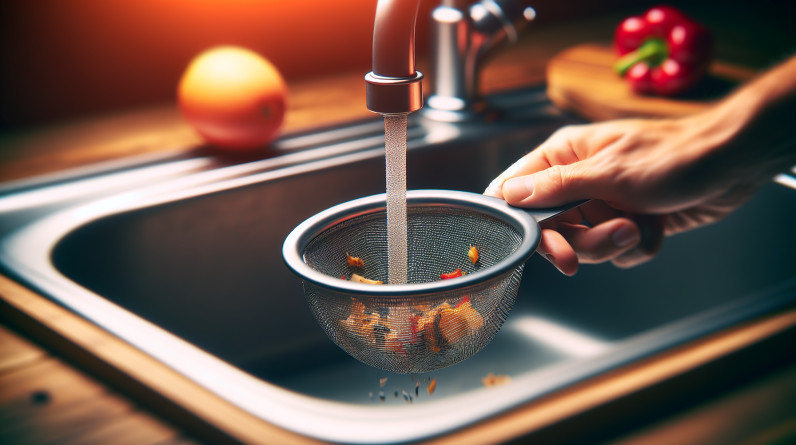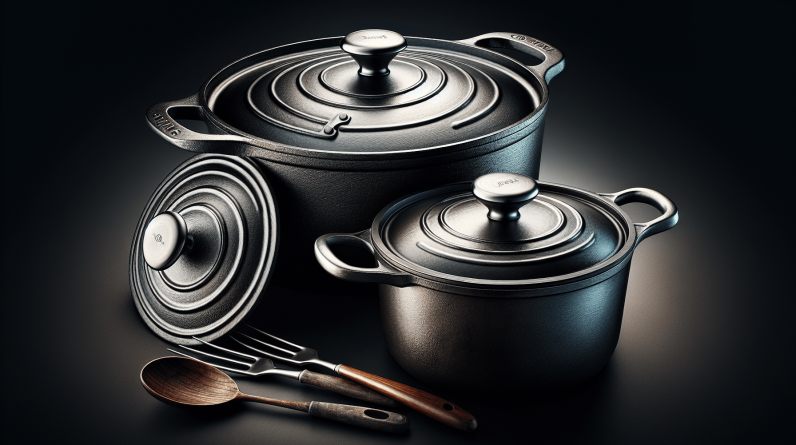Curious about the dissimilarity between a blender and a food processor? Look no further! We’re here to shed light on this common kitchen conundrum. While both appliances play crucial roles in the culinary world, they possess distinct purposes and capabilities. From whipping up silky smooth smoothies to creating perfectly chopped ingredients, we’ll unravel the mysteries and help you make the right choice for your kitchen adventures in no time.

Motor power
When it comes to choosing between a blender and a food processor, one important factor to consider is the motor power. The motor power determines the efficiency and performance of these kitchen appliances.
Blender motor power
Blenders typically have a powerful motor, designed to handle a wide range of ingredients and produce smooth and consistent results. The motor power of blenders usually ranges from 500 to 1500 watts, allowing them to blend tough ingredients like ice, frozen fruits, and fibrous vegetables with ease. With a higher motor power, blenders can achieve faster blending speeds, ensuring that your smoothies, soups, and sauces are perfectly blended in no time.
Food processor motor power
On the other hand, food processors generally have a slightly lower motor power compared to blenders. Their motor power typically ranges from 250 to 1000 watts, which is adequate for processing different types of food, such as chopping vegetables, shredding cheese, or kneading dough. While food processors may not have the same level of power as blenders, they are still capable of efficiently handling a wide variety of food preparation tasks.
Blades
Blades play a crucial role in both blenders and food processors, as they are responsible for cutting, chopping, and grinding ingredients.
Blender blades
Blenders are equipped with sturdy and sharp blades, typically made of stainless steel, that are designed to blend ingredients into fine or smooth textures. The blades in blenders are strategically positioned at the bottom of the blending jar, allowing them to create a vortex that pulls ingredients down towards the blades, ensuring a thorough and consistent blend.
Food processor blades
Food processors feature a variety of interchangeable blades that are designed for different food processing tasks. They often come with blades suitable for slicing, shredding, chopping, or pureeing. These blades are placed in a bowl, which is then attached to the food processor base. The food processor blades are built to handle larger volumes of food and provide precise cutting for a variety of recipes, making them incredibly versatile in the kitchen.

Capacity
Capacity is an important consideration when choosing between a blender and a food processor, as it determines how much food or liquid can be processed at once.
Blender capacity
Blenders come in various sizes, ranging from personal or single-serving blenders to larger, family-sized blenders. The capacity of blenders is typically measured in liters or ounces and can range from 0.5 liters to 2 liters or more. Personal blenders usually have a smaller capacity, which is ideal for making individual smoothies or shakes, while larger blenders are great for batch cooking or preparing meals for the whole family.
Food processor capacity
Food processors generally have a larger capacity compared to blenders, allowing you to process larger quantities of food at once. The capacity of food processors is also measured in liters and can range from 1.5 liters to 4 liters or more. The larger capacity of food processors makes them suitable for preparing large meals, chopping multiple vegetables, or kneading dough for baking.
Functionality
The functionality of blenders and food processors varies, as each appliance is designed with specific tasks in mind.
Blender functionality
Blenders are primarily designed for liquids and achieving smooth textures. They excel at blending ingredients to create smoothies, milkshakes, purees, and soups. Some blenders also come with pre-programmed settings, allowing you to easily make things like ice cream, frozen desserts, or even hot soups. Blenders are an essential tool for those who enjoy making smooth and perfectly blended beverages.
Food processor functionality
Food processors are versatile kitchen appliances that excel at tasks like chopping, slicing, shredding, and mixing. They are perfect for tasks that require precise cutting, such as making homemade salsa, slicing vegetables for stir-fries, shredding cheese for toppings, or even kneading dough for bread or pastries. Food processors are the go-to appliance for those who like to experiment with different recipes or need to process a variety of ingredients.

Speed settings
The speed settings of blenders and food processors determine the control and versatility of these appliances when it comes to handling different ingredients.
Blender speed settings
Blenders typically come with multiple speed settings that allow you to control the blending process based on the ingredients and texture you desire. Most blenders have at least two or three speed options, ranging from low to high. This flexibility in speed settings enables you to adjust the blending speed to match the hardness or consistency of the ingredients. Some blenders also have pulse settings, which provide short bursts of high-speed blending for better control over the texture.
Food processor speed settings
Food processors usually have fewer speed settings compared to blenders. They often come with a single speed, along with a pulse function. The single speed setting allows you to process ingredients consistently, while the pulse function provides short bursts of power for quick chopping or mixing. While food processors may have fewer speed options, their functionality and interchangeable blades make up for it, allowing you to achieve precise results with ease.
Blending
Blending is a common task for both blenders and food processors, but the way in which they handle this task may differ.
Blender blending capabilities
Blenders are specifically designed for blending ingredients to create smooth and consistent textures. They achieve this by pulling ingredients down towards the sharp blades at high speeds, creating a vortex that ensures thorough blending. The high-powered motor of blenders allows them to handle a variety of ingredients, ranging from soft fruits and vegetables to ice cubes and frozen fruits, resulting in creamy smoothies, silky soups, and velvety sauces.
Food processor blending capabilities
While food processors are not primarily designed for blending, they can still handle some blending tasks. However, due to their design and less powerful motor, the results may not be as smooth or consistent as what you would achieve with a blender. Food processors can handle softer ingredients and liquids, such as pureeing cooked vegetables or making sauces, but may struggle with harder ingredients like ice or frozen fruit. If blending is a primary task for you, a blender would be the better choice.

Chopping and Grinding
Chopping and grinding are tasks that can be efficiently carried out by both blenders and food processors.
Blender chopping and grinding capabilities
Blenders are not typically used for chopping or grinding due to their design and the positioning of their blades. While they can handle softer ingredients, such as garlic, herbs, or nuts, blending blades are not intended for chopping larger quantities of food or grinding spices. However, some blenders come with additional accessories, such as a small chopping bowl or grinding attachment, that allow you to carry out limited chopping and grinding tasks.
Food processor chopping and grinding capabilities
Food processors are ideal when it comes to chopping and grinding. With their versatile interchangeable blades, food processors can handle various chopping tasks, whether it’s finely dicing vegetables, chopping nuts, or making homemade breadcrumbs. Grinding spices, seeds, or even coffee beans is also a breeze with the grinding attachment of a food processor. The capacity and functionality of food processors make them the go-to appliance for efficient and precise chopping and grinding tasks.
Mixing and Kneading
Mixing and kneading are tasks that are better suited for food processors than blenders.
Blender mixing and kneading capabilities
Blenders are not designed for mixing or kneading tasks. Their blades and blending jars are not suitable for handling thick batters, doughs, or heavy mixtures. While you can use a blender for certain mixing tasks, such as blending pancake batter or mixing salad dressings, it would not be the most efficient or effective tool for larger mixing or kneading jobs.
Food processor mixing and kneading capabilities
Food processors excel at mixing and kneading tasks. With their larger capacity and powerful motor, they can handle thick batters, doughs, and heavy mixtures with ease. Whether it’s preparing cookie dough, mixing cake batter, or kneading bread dough, a food processor can save time and effort in the kitchen. The mixing and kneading capabilities of food processors make them a valuable tool for avid bakers or those who enjoy homemade bread and pastries.

Attachments and Accessories
Attachments and accessories can enhance the versatility of both blenders and food processors.
Blender attachments and accessories
Blenders often come with additional attachments and accessories that can expand their functionality. Some common attachments include blending jars with different sizes, single-serve cups for personalized smoothies, or tamper tools for pushing down ingredients during blending. Some high-end blenders also offer specialized attachments for tasks like food processing, grinding, or making nut butter. These attachments and accessories allow you to customize your blending experience and make the most out of your blender.
Food processor attachments and accessories
Food processors come with a wide range of attachments and accessories that enhance their versatility. These can include various blade attachments for slicing, shredding, or grating, discs for julienne cuts, dough blades for kneading, or even citrus juicers. The interchangeable nature of these attachments allows you to easily switch between tasks and achieve precise results. Having a variety of attachments and accessories expands the capabilities of your food processor, making it a truly multi-functional kitchen appliance.
Price
Price is always a consideration when choosing between a blender and a food processor.
Blender price range
The price range for blenders can vary significantly depending on the brand, features, and motor power. Personal blenders or basic countertop blenders can be found in the lower price range, starting from $20 to $50. Mid-range blenders with more power and additional features typically range from $50 to $150. High-end blenders with powerful motors, advanced settings, and additional attachments can range from $150 to $500 or more. The price of a blender ultimately depends on the desired features and performance.
Food processor price range
Food processors also have a wide price range based on the brand, capacity, and functionality. Basic food processors with smaller capacity and fewer features can be found in the lower price range, starting from $30 to $70. Mid-range food processors with larger capacities, additional attachments, and more power generally range from $70 to $150. High-end food processors with larger capacities, powerful motors, and extensive functionality can cost anywhere from $150 to $500 or more. The price of a food processor will depend on your specific needs and desired features.
In conclusion, the choice between a blender and a food processor ultimately depends on your specific needs and cooking habits. Blenders are perfect for those who primarily blend liquids, such as smoothies and soups, or require high-speed blending for tough ingredients. On the other hand, food processors are ideal for those who need precise chopping, slicing, and mixing capabilities, or require a larger capacity for food preparation tasks. Consider the motor power, blades, capacity, functionality, speed settings, blending, chopping and grinding capabilities, mixing and kneading capabilities, attachments and accessories, as well as the price range when making your decision. With the right appliance, you can make your time in the kitchen more efficient and enjoyable. Happy blending and processing!










